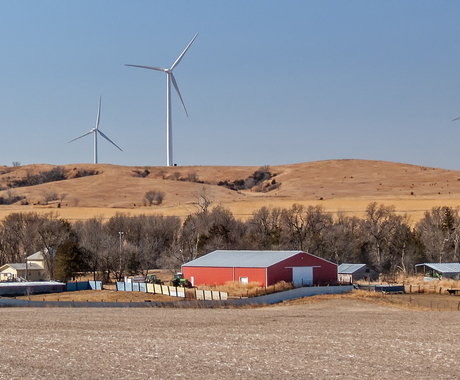The Leech Lake Band of the Ojibwe has demonstrated a long commitment to sustainability. In recent years, their Tribal government agreed that renewable energy and green infrastructure should be part of their sustainability efforts—and the progress shows.
On the Leech Lake Reservation, located in northern Minnesota and covering an area the size of Rhode Island, many of the residents lead rural lives. The Tribal government has the long-term goal of expanding renewable energy infrastructure out to the area, which has more than 9,000 enrolled members of the Tribe.
“The story of the Ojibwe people is one of adaptation and reciprocity with the natural world,” said Brandy Toft, interim environmental director. “The Anishinaabe see all life as relatives and teachers—parts of an inseparable and intricate web. As the Tribe, we see our role as being good stewards of the land, prioritizing sustainability and green technology and practices.”
The most recent chapter in this work was the receipt of a grant from the U.S. Department of Energy, for $700,000 to install solar panels on several Tribal government buildings in Cass Lake, population 896 and the location of the Tribal government’s headquarters. Toft said installing these panels will result in an energy cost savings of more than $2.5 million over the life of the systems. She hopes the project will serve as an example of the opportunities offered by a transition to clean energy.
One of the policies supporting these advances is Minnesota’s net metering rule, which allows individuals with solar panels that produce less than 40 kilowatts per month to obtain full credit on their electric bill for energy they produce. These rules have allowed valuable solar panel systems to be installed, but they also can disincentivize and complicate installation of systems that produce more than 40 kilowatts per month, at times limiting sizing of solar arrays.
The Leech Lake Band of the Ojibwe Tribal Government has several other efforts underway to save energy. In 2017, they installed five solar arrays in partnership with the Rural Renewable Energy Alliance. This was not only the first low-income community solar program in Minnesota, but also on U.S. Tribal lands, bringing in an average of $22,000 per year to serve up to 100 families.
The Tribe continued these efforts with upgrades to 22 Tribal government buildings, resulting in savings of $276,000 per year.
Finally, the Tribe has also installed the largest infrastructure for electric vehicles in northern Minnesota on the Leech Lake Reservation. The goal is to support any resident who wishes to own an electric vehicle, and ensure the infrastructure is in place for them to do so.
“If you build it, they will come,” Toft said.
She said this work has all been undertaken through a lens of social responsibility that is central to the Tribe’s worldview.
“Though human beings now have the power to transform and affect this web of life in profound ways, for the Anishinaabe, this power is tempered by a cultural understanding of the ways that such changes impact the land and their people, and a responsibility to care for the health and wellbeing of all their relations,” Toft said.




